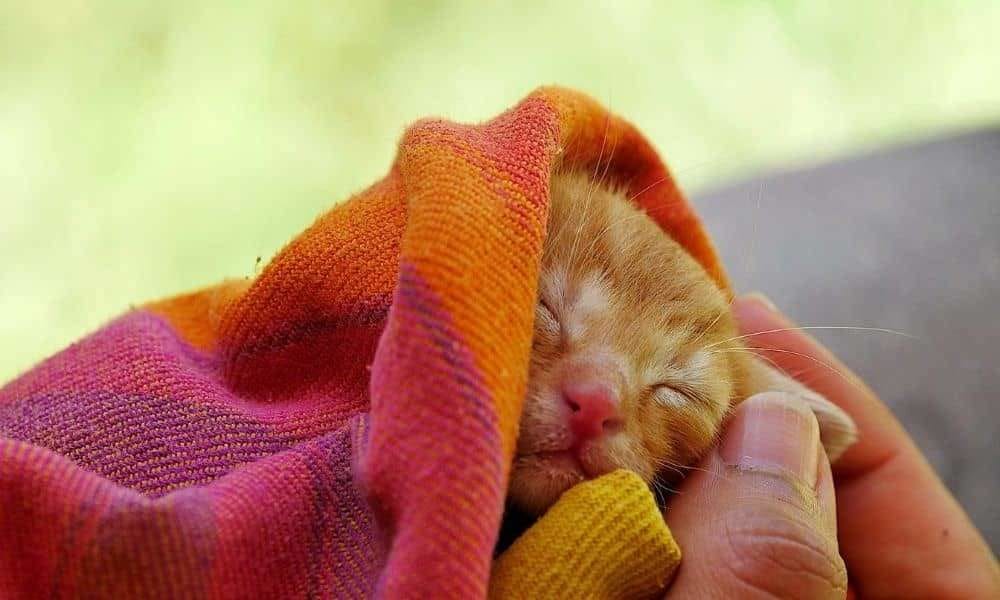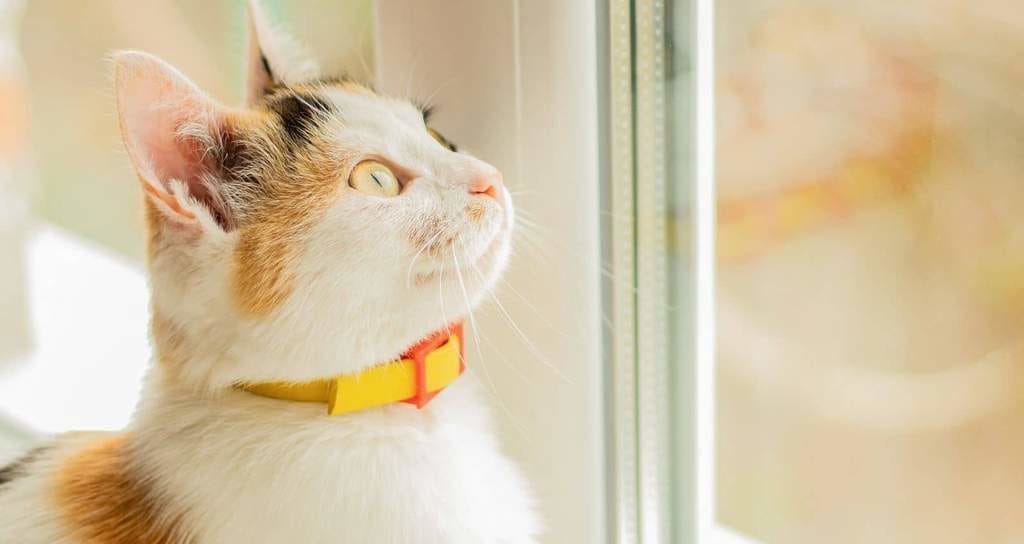The life cycle of the cat
The life cycle of cats can be divided into four stages : kitten, adolescent, adult and senior. Their behavior changes at each stage of their life, as age increases.
Kittens (0 to 6 months)

Most kittens grow about 1 pound per month. They tend to learn to explore the environment around them. Kittens are still building their immune systems , so they need serious care.
Kittens are very active at this stage, they always want to play. According to recent research, the hormone responsible for growth is secreted during sleep in kittens.
Adolescence (6 to 12 months)
Adolescence is characterized by slow growth . They are sexually mature and can therefore reproduce. Already immune to most diseases. They are very active.
Adult (12 months to 7 years)

The adult adopts behaviors such as reduced activity unless kept active. Adult cats can gain weight easily. He rarely plays and is less active. Some drink more, show signs of stiffness, and gain or lose weight. They become lazier .
Determining the cat's age
If your cat's date of birth is not known to you, one way to calculate its age is to look at its teeth. Count them. Is the teeth complete? Kittens typically have 26 baby teeth and adult cats have 30 .

Cats under 8 weeks of age are still developing their milk teeth, or “baby teeth” . Between 8 weeks and 6 months, your cat will lose teeth and have permanent teething.
Baby teeth are whiter because the enamel and dentin are thinner. The pulp is also larger compared to the rest of the tooth. Adult teeth are yellower.

- Examine teeth to see if they are stained with tartar.
- Cats under one year of age generally have clean, white teeth.
-
A yellow or discolored tooth is a sign of tartar buildup which indicates an older cat.
- Discoloration increases with age.
- Examine tooth wear.
- Cats between the ages of 3 and 5 may begin to show some wear on their teeth.
- In cats over 5 years old, teeth may be missing , or be pigmented by stains.
How long have cats been domesticated?

Did you know that cats have only been living indoors every day for 70 years ? For over 10,000 years, cats have lived outdoors. They share the environment with surrounding species such as birds, wildlife and flora.
Cats therefore became domesticated quite late. Additionally, millions of wild cats today continue to lead healthy lives outdoors , given that they are biologically capable of doing so.
Origins of domestic cats

Relations between humans and cats began between 10,000 and 12,000 years ago in the Fertile Crescent. The latter, which today includes regions of present-day Western Asia, saw the birth of the first developments of human civilization. Today it encompasses present-day regions of Western Asia.
One of the major developments of civilization was agriculture, when men abandoned their nomadic lifestyle and settled down permanently to cultivate the land. The cereals stored in this way attracted rodents.

Wild cats, or felix silvestris lybica , then preyed on rodents, and settled in the surrounding areas of these first cities, rummaging through the waste that all human societies inevitably produce. No big difference from today's wild cats.

After thousands of years of adaptation, a new species of cat emerged and naturally settled around humans: the felis catus . The stray cats and wild cats of old belong to the species we call the domestic cat today.
Cats travel the world

Cats have established a relationship of common interests with humans, to the point that some scientists claim that cats domesticated themselves. Known to be shipboard mouse killers , cats have traveled the world.
Indeed, a burial site found in Cyprus proves that humans and cats already coexisted 9,500 years ago . The cats were probably brought to the island intentionally by humans.

In ancient Egypt, cats had a very high status, they were revered, mummified and sometimes even adorned with gold jewelry in reference to the status of their owners. In 31 BC , Egypt became a province of the Roman Empire. It was then that cats were introduced to the Romans and spread to Europe around the 4th century AD.

A cat skeleton dating from this period more or less represents the skull of contemporary domestic cats . In the Canterbury Tales , Geoffrey Chaucer, for example, mentions a cat door in 1380. From Europe, cats boarded ships bound for the Americas. They probably accompanied Christopher Columbus, settlers from Jamestown and visited the Mayflower.

Cats have continued to hunt mice throughout history. In the 19th and 20th centuries, the American postal services even officially employed them for this task.
Towards the end of the 19th century , more and more Americans began to appreciate cats for their companionship and usefulness. Madison Square Garden witnessed the first cat exhibition in 1895. By 1918, cats were already commonly kept in homes in the United States .

Throughout this time, cats were allowed to come and go freely within homes - President Calvin Coolidge 's cat had free rein to come and go in the White House in the 1920s.
In his book 100 Cats Who Changed Civilization, Sam Stall, also author of The Cat Owner's Manual , "in Coolidge's day, no one thought of confining cats indoors, not even the President of the United States." .
The invention of the indoor cat

Owning indoor cats was unthinkable until several important innovations of the 20th century: refrigeration, litter boxes and the prevalence of sterilization.
These changes in our modern lifestyle help keep cats indoors. However, biologically, cats are the same as their ancestors thousands of years ago. Over the past 100 years, their role in homes has expanded, although their instincts and needs have not changed as much.
Cat's diet

Unlike dogs, which have undergone many physical changes since their domestication and evolved to survive on an omnivorous diet, cats have remained largely the same: they still need a diet rich in protein.
It was thanks to the invention of refrigeration and canned food in the 20th century that we could feed cats indoors. Previously, it would have been impossible for most Americans to feed them through hunting.
Cat litter

Before the 1950s, it was common to see cats roaming America's districts. The open air acted as a litter for them. In system D , it was possible to use trays filled with earth or newspaper for the interior.
The litter box became popular in 1960, once clay litter was discovered by chance in 1947 . The cats then had an effective indoor shelter, but they retained their ability to survive in the open air.
Castration and sterilization

It was only from 1930 that the castration of pets became accessible to the general public. During mating season, it was difficult to keep cats indoors.
Techniques existed for sterilizing livestock, but finding a competent veterinarian to sterilize a pet would have been impossible. The cats found their food and made their litter box outside. But 20th century cats also reproduced and gave birth outside. Nothing was different compared to the origins in the Fertile Crescent 10,000 years ago.

Some of these offspring can socialize and integrate into human households. But on the condition that they are put in contact with humans from a very young age. Many cats stay outside . They lead the same life they have always led, with or without contact with humans.

Even though adult feral cats, who have not developed a social bond with humans, are not suited to becoming indoor pets, sterilizing them and reintroducing them to their outdoor homes still improves their lives. Castration and sterilization therefore play a crucial role in the history of indoor cats and purebred cats.
Cats are part of our environment

Cats have shared human daily life for years. But they have only become common in homes since the 1960s or 1970s , a fairly short time on an evolutionary scale.
Throughout their history, cats have lived and developed outdoors. Control of their reproduction through sterilization , for example, is very recent, but has made it possible to welcome them into our homes. Thanks to this development , they were also able to enjoy a form of outdoor space. They were able to satisfy their biological needs in canned food as well as litter boxes.

However , wild cats were not created by man. They have lived outside for a long time, and this is, so to speak, their environment in which they have their own place.
Wild cats deserve a chance to live their lives outdoors, as they have for thousands of years. Indoor homes are not an option because they have not been socialized to live with humans. They would be scared and unhappy inside. Their home is outdoors and, like squirrels, raccoons and birds, they are adapted to it.

Recognizing this reality is essential to accepting these animals by helping them adapt to your interior. In winter, we see many people keen to provide the birds with something to survive on: suet, cabins, feeders.
Likewise, many caring people feed feral cats and build outdoor shelters for them. Thanks to associations like the SPA , wild cats are fed, sterilized, and vaccinated. This state of mind will benefit your animal, but also human communities in contact with wild cats.
Now you know everything about the origin of cats and their life cycle. Are you thinking of adopting a cat now?